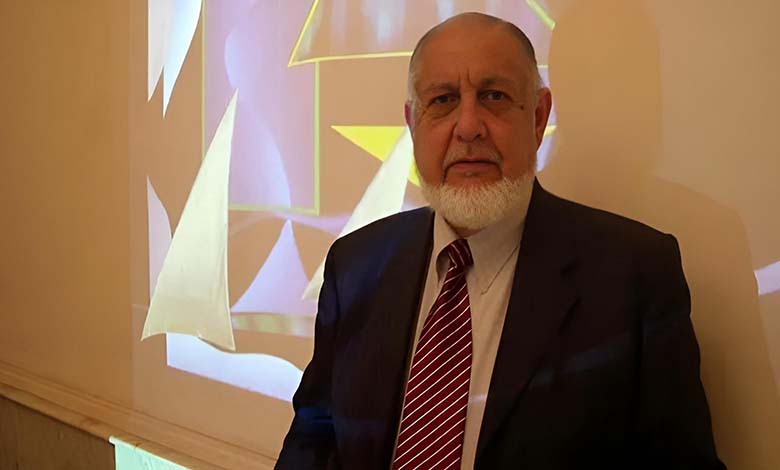The Death of One of the Most Dangerous Theorists of the Muslim Brotherhood… What Do We Know About Mohammed Ahmed Al-Rashid?

One of the most influential and dangerous theorists of the Muslim Brotherhood, Mohammed Ahmed Al-Rashid, passed away the day before yesterday in a hospital in the Malaysian capital, Kuala Lumpur, at the age of 86.
-
Muslim Brotherhood’s Maneuvers: Desperate Attempts for a Comeback with Illusory Reconciliation and Internal Struggles
-
Helmy Al-Gazar’s Call… Between the Desperation of the Muslim Brotherhood and Deepening Division Within the Group
Al-Rashid is considered the leading theorist whose writings serve as an ideological and organizational reference for the movement. Everything he wrote was regarded as an educational and behavioral constitution for all members of the Muslim Brotherhood.
He was accused of forming Muslim Brotherhood cells with young Saudis in Taif and Mecca and secretly planning coups against regimes to overthrow governments, while also shaping a generation to execute these plans.
-
The Relationship Between Al-Jama’ah Al-Islamiyah in Bangladesh and the Muslim Brotherhood is Extremely Strong: How?
-
They organize a forum to counter Houthi ideology… The Muslim Brotherhood continues to mislead Yemenis
Al-Rashid was one of the foremost thinkers of the contemporary Islamic movement. He wrote dozens of works on thought, education, and politics, and founded the “Shura Council of the Sunni People” in Iraq. He traveled extensively, preaching in both the East and the West, before passing away in exile in Malaysia.
Birth and Early Life
His real name was Abdel Moneim Saleh Al-Ali Al-Azzi, nicknamed “Abu Ammar,” with his movement name being “Mohammed Ahmed Al-Rashid.” He was born in 1938 in the Al-Adhamiyah district of Baghdad, the capital of Iraq. In his youth, he was known for his passion for reading literary magazines.
-
Muslim Brotherhood Practices: Spread of Fake Accounts in Tunisia to Influence Elections
-
Tunisia’s Muslim Brotherhood and the Elections: Presidential Messages Expose Efforts to Gain Foreign Support
Al-Rashid became interested in politics at the age of 12, while in middle school, and was influenced by the ideas of the Muslim Brotherhood at the age of 13.
He officially joined the Muslim Brotherhood in May 1953, inspired by the speeches of its senior members, including its leader in Iraq at the time, Sheikh Mahmoud Al-Sawwaf, and the poet Walid Al-Adhami.
-
Identity Fraud and Money Laundering: Yemeni Researcher Uncovers Muslim Brotherhood Practices
-
Al-Nahda Sit-in: How the Muslim Brotherhood Turned the Square into Weapons Depots
Al-Rashid completed his primary education at the Teachers’ Applications School, known as one of the most prestigious schools in Iraq. He then attended the Faculty of Law at the University of Baghdad, graduating in 1962.
Al-Rashid studied under Salafist scholars in Iraq, including Abdel Karim Al-Sheikhli, Taqi Al-Din Al-Hilali, Mohammed Al-Qazzalji Al-Kurdi, Amjad Al-Zahawi, and Mohammed Bin Hamad Al-Ashafi. He was also influenced by the thoughts of Mohammed Mahmoud Al-Sawwaf and the poems of Walid Al-Adhami.
-
The Muslim Brotherhood Attempts to Conceal the Truth About Its Ties with Al-Qaeda… What Did They Do?
-
How the Muslim Brotherhood Sabotaged the Educational System
Al-Rashid’s religious and political thinking centered on strengthening the role of Sunnis in Iraq by establishing an effective Sunni political leadership, particularly under the regime of the late Iraqi President Saddam Hussein.
Al-Rashid worked to unite Sunni movements for effective participation in Iraqi politics, focusing on opening dialogue channels with all political factions to ensure the country’s stability.
Al-Rashid worked in Kuwait as an editor for the magazine **Al-Mujtama’**, published by the Social Reform Society, affiliated with the Muslim Brotherhood. One of his most notable contributions was a series of articles titled “Reviving the Jurisprudence of Preaching.”
-
In the Presidential Elections… Tunisia Crushes the Hopes of the Muslim Brotherhood
-
“Year of Lies and Blood”: Major Terrorist Crimes Committed by the Muslim Brotherhood in Egypt
It was during this time that his movement name, “Mohammed Ahmed Al-Rashid,” gained recognition. The preaching work in Kuwait was active, free, and intense, and he fully engaged in it, having a significant influence on the education of the association’s youth. As a result, Iraqi intelligence began to pressure him and other exiled dissidents.
Al-Rashid left Kuwait for the UAE, where he continued his preaching activities, giving lectures and overseeing training courses for young people and preachers. He later traveled between Malaysia, Indonesia, Sudan, and Switzerland, spreading religious knowledge and the jurisprudence of preaching.
-
A Journalist Recounts His Experience with the Muslim Brotherhood: Their Methods and Contradictions
-
Rumors of the Muslim Brotherhood Reach Raba’a and Nahda… Egypt Denies
He eventually returned to Baghdad, where he founded the “Shura Council of the Sunni People” in Iraq, aiming to unite Sunni voices during a time of political transition. He dedicated himself to working with the Iraqi Islamic Party, theorizing its principles.
After the American invasion of Iraq, Al-Rashid published several books and studies that highlighted the situation in the country, including The Awakening of Iraq, The Return of Dawn, Strategic Visions, Symbols of Hamas, Iraq’s Lightnings, and Together, Let’s Protect Iraq.
-
11 Years After the Sit-In Dispersal: The Anniversary of “Rabia” Deepens Divisions Within the Muslim Brotherhood
-
“Rabia”: The Muslim Brotherhood and the Creation of Victimhood… Testimony of a Writer from the Heart of the Event
He continued to travel between Malaysia and other countries, including Europe, giving lectures and courses aimed at spreading the jurisprudence of preaching among preachers, and published hundreds of articles and books.












